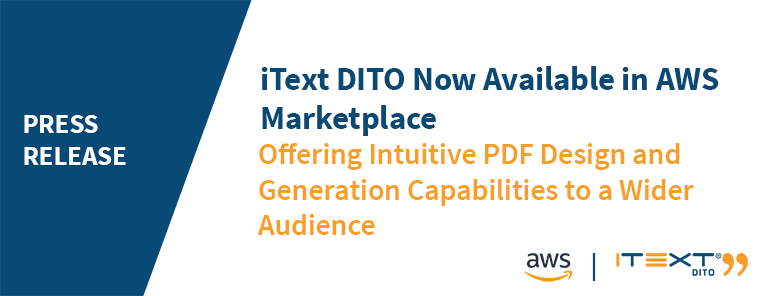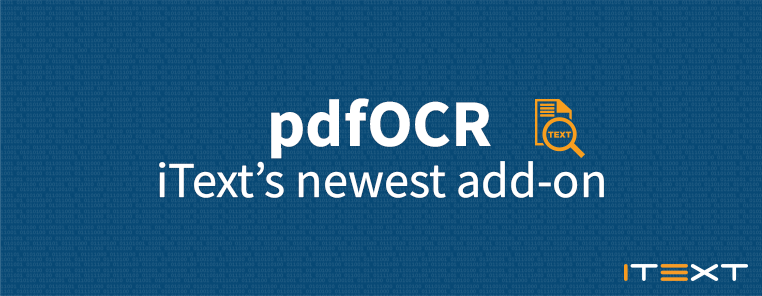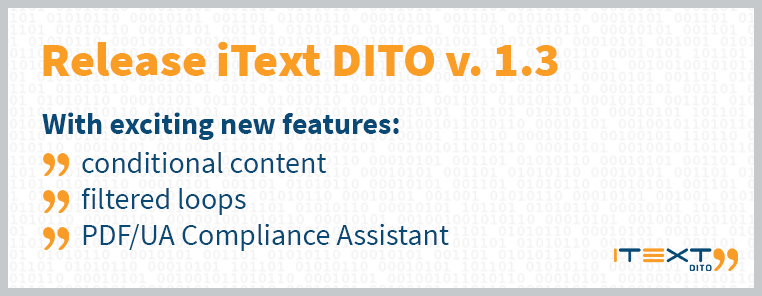Convenient Design
Convenience is really key to the 1.2 release of iText DITO. On the template design editor side, several things that were only possible via CSS coding in earlier versions are now available as properties or commands in the user interface. Gradually, more CSS-only capabilities will become available as ready-to-use UI functions and wizards.
Support for Headings
Any text inside a rich text element can be selected and marked as a heading in iText DITO v. 1.2. By default, the template design app supports 6 heading levels. All items marked as headings in a template will also be headings in the structure of the resulting PDF files.
Support for Lists
The iText DITO Editor now also has a toolbar control for numbered and bulleted lists. Any part of a rich text element can contain a list with items. Lists can also be built dynamically by formatting an iterating data binding as a list item. The list will contain as many items as there are iterations of the mapped element in the data set.
Support for Table Headers
In the 1.2 version of iText DITO you can mark a table row as header row or a column as a header column. This feature is mainly important for compliance with accessibility standards such as PDF/UA. It helps assistive technology (such as screen readers for instance) to read and interpret data presented in a table.
Page Size and Margins Settings
In version 1.2 of the iText DITO Editor you can easily set margins and other settings for your template. The template settings dialog contains presets for common page sizes, both in portrait and landscape orientation. Meta data properties of the resulting PDF documents, like the document title and language property can also be managed in the Template settings dialog. The template settings are accessible through the gear icon next to the template name in the top-left template pane.
Optimizations for Image Insertion
The 1.2 release of iText DITO contains improvements for static or dynamic insertion of images. Images that are uploaded as project resources, can be easily linked to image placeholders in the template by a simple click on the link icon next to the image resource name in the project resources pane. Moreover, images can now also have an alternative text description (alt). This allows for assistive technology like screen readers to describe what the image displays.
Containerization
On the SDK side, we have provided more convenience by creating a Docker wrapper for the iText DITO SDK. Not only does the containerization allow for more convenient deployment and scaling, it also provides developers with a convenient RESTful API that is straightforward to call and agnostic of programming languages.
iText DITO Docker Image
From a deployment perspective, a Docker version of the iText DITO SDK is available as an alternative to the standard deployment on a Java virtual machine or the iText DITO command line interface application. The Docker container comes with a RESTful API, which is a wrapper around the Java SDK, that can be called directly with a JSON payload to produce a PDF document from a template.
Deploying iText DITO in self-contained instances such as Docker containers has several advantages, including among other things:
- convenient deployment on any type of carrier (regardless of hardware infrastructure or operating system);
- straightforward scaling; and
- programming language-agnostic interfacing (RESTful API).
The Docker image of the iText DITO SDK is available on Docker Hub. In addition to the pull command, the iText DITO Docker Hub page provides documentation and practical examples on how to call the API.
Features in Preview
The following features will become available in preview mode. They will be generally available as part of the iText DITO v. 1.3 release planned in March 2020.
- PDF/UA Compliance Validation
- Knowledge Base
To already give you preview access to some of the features planned for the next feature release, the iText DITO Editor now contains a feature preview mode. It may be helpful to activate this mode in a test or development environment to familiarize yourself with expected new features before they become generally available. We discourage to use preview features in a production environment as forwards compatibility of templates created in preview mode is not guaranteed.
You can activate the feature preview mode of the iText DITO Editor via the “About” section of the Help menu.
Please download our Release Preview Guide to get even more information about iText DITO v. 1.2. The following support resources are also available for you:
- iText DITO whitepaper;
- iText DITO tutorial videos;
- Interactive support (for customers and partners holding active maintenance entitlements).


